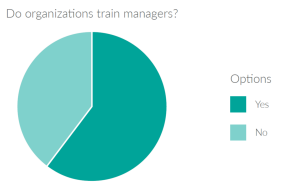There are tried and true ways that we do things, and there are ways that can revolutionize our processes for the better if we dare to take the first step. Utilizing learning management systems might sound intimidating at first glance, but think of everything that could be accomplished if everyone had their instruction at their fingertips, if they could go at their own pace, and if progress was as easy to track as clicking on a button.
New employee orientations, certifications, compliance measures, and continued education offerings suddenly become a lot less complicated, don’t they?

Where do you want to do your learning?
Think about the world we presently live in. College students can sign up for both in-person and online classes every semester, and they are connected with their instructors online in more ways than ever. From academia to the business world, elearning is giving new options to learners of every age and every industry.
Learning Management Systems can be as simple or as complex as an organization desires, but before we dive into any specifics, let’s start with the basics.
What is a Learning Management System (LMS)?
A Learning Management System is a web-based or app-based software program that enables an organization to create, deliver, and track educational materials.
In a typical classroom learning environment, students or employees arrive in an assigned space at an assigned time and cover the same material together at the same pace. The benefits of face-to-face instruction are plentiful, but Learning Management Systems supply an alternative.
With an LMS, faster learners can move through lessons or modules at a quicker pace, or conversely, learners who need more time are welcome to take as much as they need. Because Learning Management Systems are internet-based, there is no restriction on where or when the training occurs, yet accountability is maintained because each user’s individual progress can be monitored.
How can your business use a LMS?
Whether it’s your students or your employees, enabling a smoother learning process is the first step toward achieving educational goals. Some Learning Management Systems supplement in-person training opportunities, and some replace these physical classroom experiences entirely. It’s up to your organization to know what is right for you, but when thinking about benefits of an LMS, you can’t ignore the following:
- Learning materials can be organized once and delivered again and again. Rather than an instructor continually restructuring a fresh delivery of frequently discussed materials, a LMS allows a business to create an organized learning library of audio, video, and text materials that can be used whenever they’re needed.
- Juggling schedules and availability is no longer a concern. With unlimited access to learning materials, there’s no hassle of finding mutually beneficial times for trainings around complicated work and life demands. Learning is available when the student is.
- Progress and performance are trackable by both the student and the educational lead, be it an academic instructor or an HR department. Knowing what learning modules have been completed and resulting scores from integrated quizzes and tests keeps everyone invested and accountable.
- Learning and development costs are often minimized. Training sessions and workshops can be costly, especially when they are repeated for every new employee or semi-annually for certification standards, but Learning Management Systems are not as intimidating in price as might first be imagined. When doing a side-by-side price comparison of physical versus online learning environments over time, LMS solutions often are the more economical answer.
- Compliance regulations can be comprehensive, but employers can be sure that every last detail of these requirements is met with a Learning Management System. With a program designed to stop anything from slipping through the cracks, organizations can feel legally responsible and more confident than ever about their team.
- Courses and training opportunities are scalable. Starting out with the management of a single certification process or a single selection of the onboarding experience is a great entry-point to an LMS, but if a business wanted to expand their elearning offerings, this growth is easy, whether that expansion includes microlearning, gamification, expanded video libraries, or anything else. The system is already in place, ready to handle anything that is needed.
- Social learning can be built in to elearning. Just because the learning process is moving away from a typical classroom doesn’t mean that student interaction or collaboration needs to be lost. It’s all there, ready and waiting.
Sometimes, the biggest lingering hurdle to implementing an LMS is the idea of the hardware that might be necessary, but again, this is where the wonder of our time has the best answer of all. You can see it in the data: 74% of employees in businesses using LMS systems have a BYOD (bring your own device) policy. Everyone has smartphones, tablets, laptops, or PCs readily available. There’s often no additional hardware needed to hit the ground running and revolutionize the learning processes that produce challenges time and again.
Business & Finance Articles on Business 2 Community(53)
Report Post






